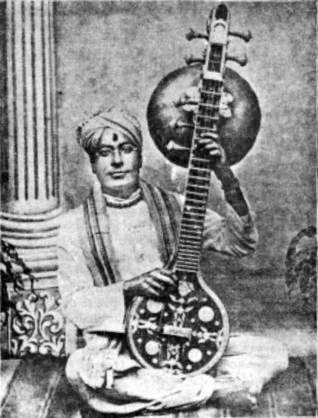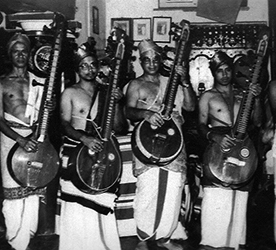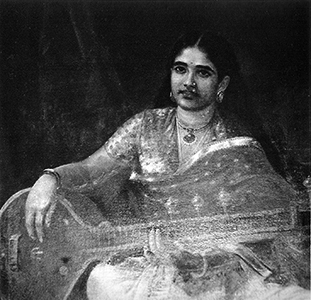| The horizontal position of the instrument, known as « Sayana” is the only one that is actually practiced these days. The kudam rests on the floor, to the right of the musician, and the neck is held in an almost horizontal position thanks to the gourd attached to it, which is placed on the left knee. The index and middle fingers of the left hand press the strings on the frets, while the right hand resting lightly on the edge of the soundboard, plucks the melodic strings with the index and the middle fingers, and the drone (tala) strings with the little finger. In general, the soundboard is at an angle of 45° with the floor and is therefore turned as much (if not more) towards the musician as towards the audience. In the beginning of the century, a variant of this position was practiced in Kerala, in the court of Travancore, where the soundboard was almost perpendicular to the floor. This position must certainly have facilitated the transmission of the sound to the public. |
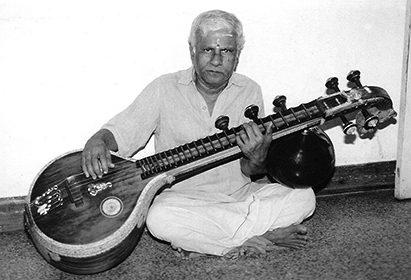 K.P. Sivanandam, from the Tanjore Bani K.P. Sivanandam, from the Tanjore Bani
|
|
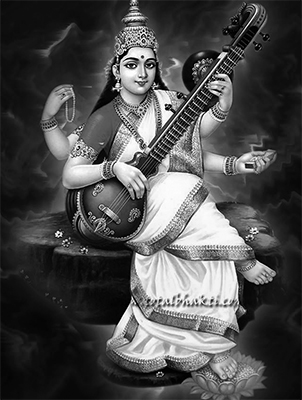 A modern picture of Goddess Saraswati
A modern picture of Goddess Saraswati